Youtube Link:
Transcript:
Hello everyone, my name is Hung Hiu Yi, my name is Fung Chi Him. We are going to introduce Yau Ma Tei today, and we will introduce three places. Yau Ma Tei is one of the most iconic and lively districts in Kowloon, with many cultural treasures, historic streets, shops and foods.
The first location we’d like to introduce is the “Yau Ma Tei Fruit Market,” which was established in 1913. Before 1965, the market was a wholesaler of fruits, vegetables, and fish. However, with the development of separate wholesale markets for vegetables and seafood, the fish and vegetable sections gradually moved out, leaving only the fruit trade and wholesale enterprises, resulting in the foundation of the Fruit Market. Initially, the market featured approximately 40 stallholders. By the late 1980s and early 1990s, the Fruit Market had reached its peak, with over 300 stallholders and a workforce of over 120,000 people working in the fruit industry. Today, the Fruit Market just includes 200 stallholders and 48,000 related jobs.
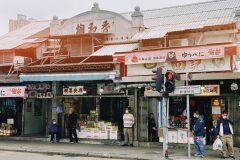
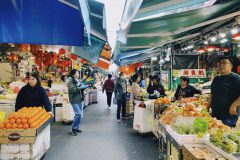
The Fruit Market is a complex consisting of buildings constructed in different eras. Based on the pictures we took, it is evident that the structures of the Fruit Market buildings adopt a simple and practical approach, with modest decorations that reflect the architectural styles of their respective periods. Some buildings are constructed using plaster, while others utilize corrugated iron sheet. In terms of historical significance, several of the buildings in the Fruit Market boast a rich history spanning several decades, and in some cases, even over a hundred years. However, due to the progress of time and a decline in the number of practitioners, many of the interior spaces are either left vacant or repurposed as warehouses.
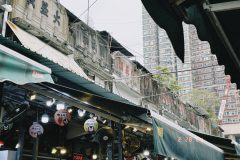
Moreover, the Fruit Market has an important impact on the economy and activities. It imports a vast range of fruits from all over the world, and Hong Kong usually has the highest sales volume of fruits in a single region worldwide. Currently, the Yau Ma Tei Fruit Market processes almost 80% of Hong Kong’s fresh fruits, making it the primary distribution hub. Furthermore, the market acts as a transhipment hub for both Chinese and foreign fruits, selling Chinese fruits to the rest of the world while also bringing fruits from other countries into China.
 In addition, the Fruit Market holds a nostalgic meaning for many Hong Kong residents. It is not always about elaborate or uniquely designed architectural styles, but rather about the deep emotional attachment people have towards the Fruit Market, which is why they are determined to preserve it. Over time, it has became an integral part of Hong Kong’s identity. Therefore, we find the Fruit Market to be an intriguing building, considering its historical significance that should be passed down to future generations.
In addition, the Fruit Market holds a nostalgic meaning for many Hong Kong residents. It is not always about elaborate or uniquely designed architectural styles, but rather about the deep emotional attachment people have towards the Fruit Market, which is why they are determined to preserve it. Over time, it has became an integral part of Hong Kong’s identity. Therefore, we find the Fruit Market to be an intriguing building, considering its historical significance that should be passed down to future generations.
Now, we’d like to introduce another remarkable building: the mahjong parlour. Mahjong has traditionally been a popular form of entertainment in Hong Kong. It is more than just a game; it also serves to entertain and improve social interactions. People often gather in teahouses, community centers, and mahjong parlour to participate in this traditional activity. Indeed, during our visit to Fruit Market and in the Yau Ma Tei area, we noticed many merchants playing mahjong in their rooms, showing its popularity.
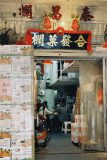
As you mentioned we saw quite a lot of people love to play mahjong. Some staff in the fruit market will play with their neighbors or friends. We also discover that there are plenty of locals or we say “kaifong” and some tourists will play mahjong in the mahjong parlour. Mahjong has been a popular pastime in the Chinese community for many years. Especially during spring festivals and wedding, you simply can hear the sound of mahjong everywhere. Or you can say playing mahjong is a tradition during the lunar new year. That’s the reason why the generation before us always like to play mahjong. They treat mahjong as a way for people to chitchat. However, this tradition is beginning to fade away. Nowadays people have more entertainment like playing games and watching TV. They can do whatever they want without being limited to playing mahjong. Even people can play it on the phone. It is the reason why we see that the number of mahjong parlour decreased. Also, the Government stipulated that mahjong parlours had to apply for a license from the Hong Kong Police Force. In 1956 The Government then issued 144 licences but there are only 66 mahjong parlour licences remaining in Hong Kong. So we can foresee that the mahjong parlour is difficult to operate. Locals will lose a place for entertainment.
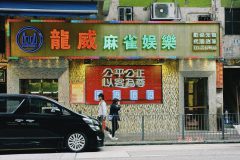
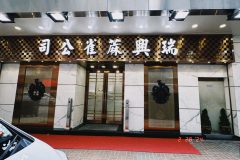
Now we shed our light on the neon light that we saw in the street and I am going to talk about the neon light in Hong Kong. So what is neon light? Why is it so special? Let me give some background information about it. Neon signs can be traced back to the year 2000 when they were durable and cheap in quality, but later on, they were all handmade by master craftsmen. Neon signs are made up of 99.5% neon and 0.5% argon that’s why it is call neon light. Neon light are usually used for advertising or signage purposes. In Hong Kong, neon signs are commonly installed in three ways: from the extension of the building, on the outside wall of the building, and on the storefront. At one time, the large number of neon signs in Hong Kong was one of the characteristics of Hong Kong, and many movies were specially filmed in Hong Kong for this reason. For example, A Light Never Goes Out. In this movie it mentions neon light is vanishing in Hong Kong. So why neon light is vanishing in Hong Kong?
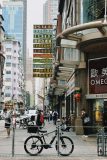 One of the major factors is the safety concern. Since the cost of production and maintenance is increasing the salary of a skilled craftsman is relatively lower than other jobs. Therefore the number of craftsmen is decreasing. So neon light lacks of maintenance. Due to the amendment of the Buildings Ordinance by the Hong Kong Government in recent years. Hong Kong government forced the owner of the building to remove or re-maintained a large number of neon signboards. Nearly 16,000 neon signboards will be removed in five years alone. The neon light is a special scenario in Hong Kong it has its own Historical and Nostalgic Value to separate from other similar cities like Tokyo and Singapore. It creates a cultural identity. Neon light is an iconic feature of Hong Kong it makes Hong Kong more energetic and bustling. Moreover it is the collective memory of locals and tourists. Hong Kong lost an attractive tourist spot and an Important platform for the World to Know more about Hong Kong.
One of the major factors is the safety concern. Since the cost of production and maintenance is increasing the salary of a skilled craftsman is relatively lower than other jobs. Therefore the number of craftsmen is decreasing. So neon light lacks of maintenance. Due to the amendment of the Buildings Ordinance by the Hong Kong Government in recent years. Hong Kong government forced the owner of the building to remove or re-maintained a large number of neon signboards. Nearly 16,000 neon signboards will be removed in five years alone. The neon light is a special scenario in Hong Kong it has its own Historical and Nostalgic Value to separate from other similar cities like Tokyo and Singapore. It creates a cultural identity. Neon light is an iconic feature of Hong Kong it makes Hong Kong more energetic and bustling. Moreover it is the collective memory of locals and tourists. Hong Kong lost an attractive tourist spot and an Important platform for the World to Know more about Hong Kong.
In the picture you can see Portland Street in 2000 the street is full of neon lights. And back to now 2024 you can clearly see the difference in the number of neon lights. You can observe that some buildings on Portland Street are having maintenance works which will also conduct the removal project of neon lights. Some local and Conservation Groups hope that the visual history of Hong Kong as a neon city can be preserved and the unique characteristics of Hong Kong should be retained.
Fung Chi Him (UID: 3036058209), Hung Hiu Yi (UID: 3036141147)